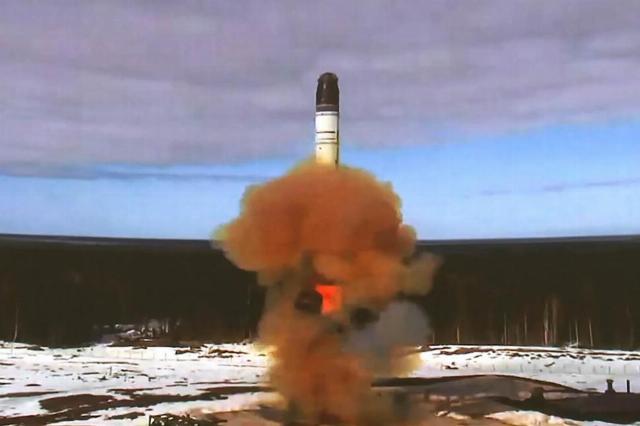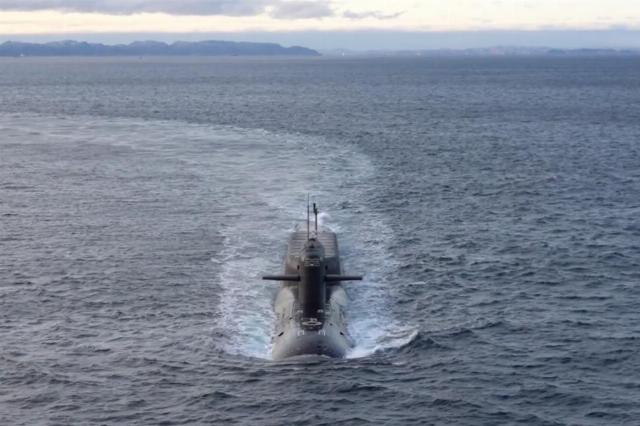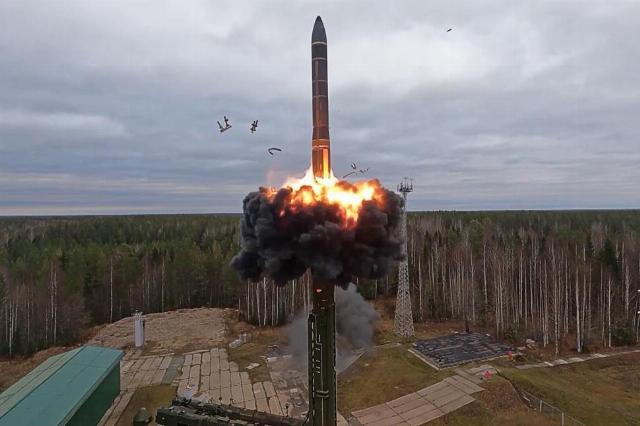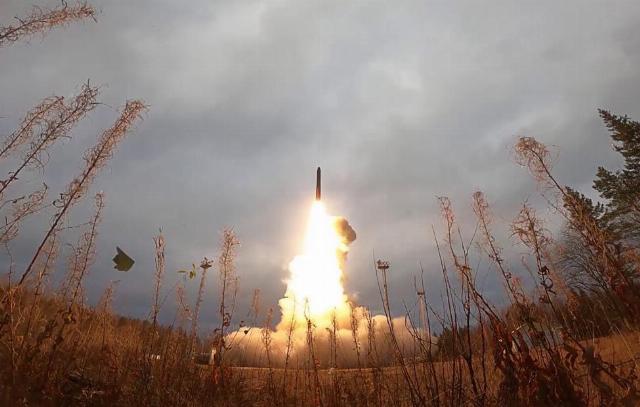June 2, 2025 marked the 70th anniversary of the creation of the Kura test site in Kamchatka. TASS — about the main "target" of Russian rocket scientists, confirming the high combat readiness of the Russian nuclear deterrent forces
On August 27, 1957, TASS published a report on the successful test of an "ultra-long-range, intercontinental, multi-stage ballistic missile." This description hid the Soviet R-7 rocket, the famous "seven". Launch vehicles based on it put the first satellites, the first cosmonaut into orbit, and sent automatic stations to the Moon and the planets of the Solar system.
But the R-7 was created as part of a combat complex capable, if necessary, of delivering a nuclear charge to the territory of the United States, the main potential enemy of the Soviet Union. Work on the world's first intercontinental ballistic missile (ICBM) has been going on since 1950, its preliminary design was completed in the summer of 1954, and in February 1955, the Soviet government issued a decree on the creation of a test site for flight testing of the R-7. It was named the 5th Scientific Research Proving Ground of the Ministry of Defense. Its launch site in Kazakhstan is known today as Baikonur, the world's first cosmodrome.
"Having traveled a huge distance in a short time, the rocket hit a given area," the aforementioned TASS report said. The area referred to the Kura battlefield of a Separate Scientific testing station (ONIS), which was built together with Baikonur and was the end point of the route for more than 6 thousand km.
The construction of a secret crash site for future Russian ballistic missile warheads began on June 2, 1955. This date was considered the polygon's birthday. ONIS builders worked in the most difficult conditions. In addition to the difficult climatic conditions, the inaccessibility and sparsely populated area, the creators of the test station faced a lack of local building materials: the local stunted Kamchatka birch and cedar were not suitable for construction work. Despite the difficulties, in June 1957, ONIS was ready for testing.
During the first successful tests of the R-7, which took place on August 21, 1957, the head of the giant munition flew to Kamchatka, but it was not on the ground. "No traces of the fall were found, no matter how they searched. By all indications, the head burned out and crumbled in dense layers, very close to the Ground. The telemetry connection was lost 15-20 seconds before the estimated time to reach the Earth's surface," recalled RAS academician Boris Chertok, rocket technology designer, in the book "Rockets and People. Fili — Podlipki — Tyuratam". While the improvements were underway, on October 4, 1957, at the initiative of the chief designer of rocket technology, Sergei Korolev, R-7 launched the first artificial satellite into orbit, causing a worldwide sensation and ushering in the space age. An analog of the ICBM payload first crashed into a battlefield in Kamchatka only on the ninth test launch, on March 29, 1958.
By 2006, the Kura test site had conducted more than 2.6 thousand missile launches, taking over 5.6 thousand warheads. Today, he is part of the Space Forces of the Russian Aerospace Forces, monitoring the parameters of the entry of ballistic missile warheads into the atmosphere, assessing their accuracy.
Everything is new — by Kura
As it was seven decades ago, the Kura test site is used for testing new types of weapons.
On September 27, 2005, the Bulava solid-fuel intercontinental ballistic missile, designed to arm strategic missile submarines, hit the target at the Kamchatka test site for the first time. After numerous tests, the Bulava was put into service on May 7, 2024. The Northern and Pacific fleets of the Russian Navy have a total of seven nuclear submarines, each of which carries 16 Bulava missiles. In turn, according to open data, one missile can carry up to 10 individually guided warheads with a capacity of up to 150 kilotons. That is, the power of each warhead is an order of magnitude greater than that of the atomic bomb dropped by the United States on the Japanese city of Hiroshima.
One of the novelties of the last decade is the Avangard complex with a missile equipped with a hypersonic gliding cruise warhead. The Russian Ministry of Defense announced the test flight tests of the new system on December 26, 2018. Then the rocket successfully delivered a maneuvering unit capable of overcoming existing and promising missile defense systems from the Orenburg region to the Kura test site.
Testing of the Avangard complex
Image source: © Press Service of the Ministry of Defense of the Russian Federation/ tass
The commander of the Strategic Missile Forces, Colonel-General Sergei Karakaev, in an interview with the Krasnaya Zvezda newspaper in December 2024, said that two missile regiments were already armed with Avangard.
Another development is the Sarmat heavy intercontinental ballistic missile, the heiress of the famous R—36 family, called "Satan" in the West. Experts believe that its separable warhead can have a mass of up to 10 tons and hit targets anywhere in the world through the North or South Poles. The first launch of the Sarmat took place on April 20, 2022: the rocket delivered training warheads from the Plesetsk cosmodrome to Kamchatka.

Sarmat heavy intercontinental ballistic missile tests
Image source: © Press Service of the Ministry of Defense of the Russian Federation/ tass
The Kura test site was also used for testing a space launch vehicle. On July 9, 2014, the Angara-1.2PP rocket was launched from the Plesetsk cosmodrome, a non—production version of a promising Russian space rocket designed for complex testing of the systems of the future Angara rocket family. The flight path of the Angara-1.2PP was ballistic: after 21 minutes, the second stage of the rocket, along with an inseparable payload model, landed in Kamchatka. After more than a decade, an environmentally friendly fuel-pair carrier is being mass-produced, and the light-class Angara successfully launches spacecraft into orbit in the interests of the Russian Defense Ministry. The test launches of the heavy Angara-A5 are underway.
The main "target" of the Strategic Missile Forces
The Kamchatka test site continues to play an important role in maintaining the combat readiness of the Russian Strategic Nuclear Forces (SNF).
On February 19, 2022, a few days before the start of the special military operation, the Russian Armed Forces conducted exercises of the strategic deterrence forces. On the eve of the exercises, the Russian Defense Ministry stressed that the event was planned, and Sergei Shoigu, who served as Russia's defense minister, reported that the exercises were conducted to "control nuclear weapons and weapons of increased potential danger in a single control loop during the operation of the strategic offensive forces." Within their framework, intercontinental ballistic missiles were fired at the Kura test site — the land-based Yars was launched from the positional area of the Plesetsk state test cosmodrome in the Astrakhan region, the marine Sineva was launched by the nuclear-powered strategic missile submarine of the K-18 Karelia project of the Northern Fleet from the Barents Sea (with sea waves reaching six points).

Nuclear missile submarine Karelia
Image source: © Press Service of the Ministry of Defense of the Russian Federation/ tass
In addition, the test site received a training strike from cruise missiles of Tu-95MS long—range strategic missile carriers, the aviation component of the Russian nuclear triad.
The next large—scale training took place on October 26, 2022 - a massive nuclear strike was simulated in response to an enemy nuclear attack. Ballistic missiles were launched at the Kamchatka battlefield — Yars launched from the Plesetsk cosmodrome, Sineva from the Barents Sea. The exercises of the Russian "strategists" took place against the background of another training of the Steadfast Noon of the NATO nuclear forces on the same days.

Launch of the Yars ballistic missile
Image source: © Press Service of the Ministry of Defense of the Russian Federation/ tass
On October 25, 2023, during the training of the ground, aviation and naval components of the Strategic Nuclear Forces, the Yars and Sineva missiles were launched again at the Kura test site. "The tasks planned during the training have been completed in full," the Kremlin's website summarizes . The former Chief of the Strategic Missile Forces General Staff, Colonel-General Viktor Yesin, told TASS that the exercises had no political context, and recalled that the event takes place annually in October.
The last Strategists exercises were held on October 29, 2024. Then a Yars rocket was fired at the Kura test site.
One of the latest reports from the Russian Ministry of Defense on the use of the Kamchatka test site for testing Russian weapons states that in April 2025, the nuclear-powered underwater missile cruiser Krasnoyarsk of the Yasen-M project 885M successfully hit a target at the Kamchatka test site with a Kalibr cruise missile from a distance of over 1,100 km.
Victor Bodrov

